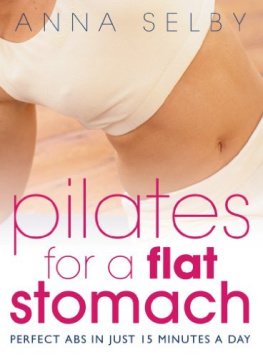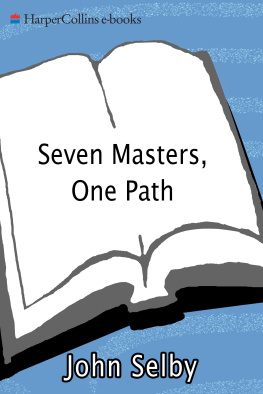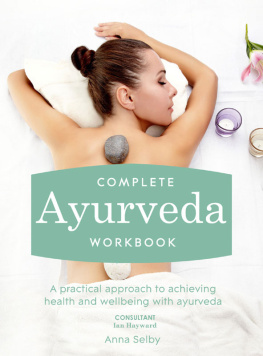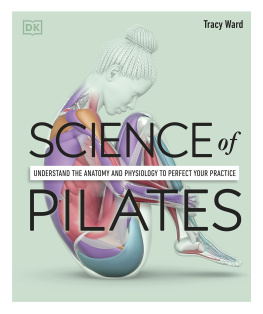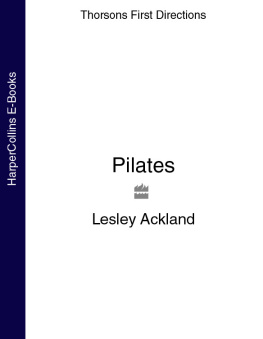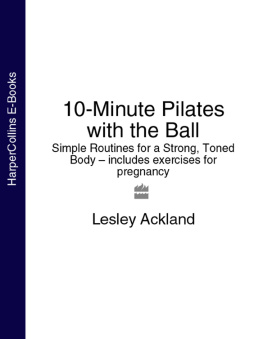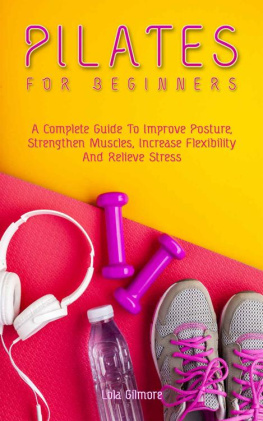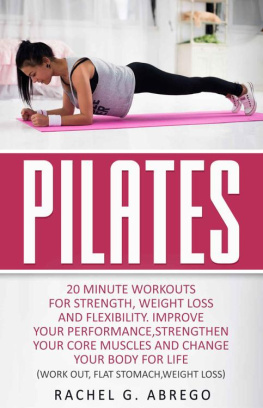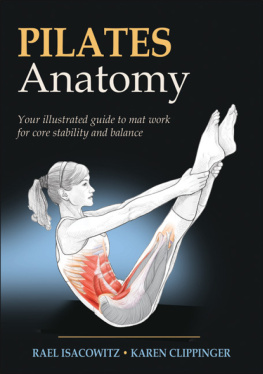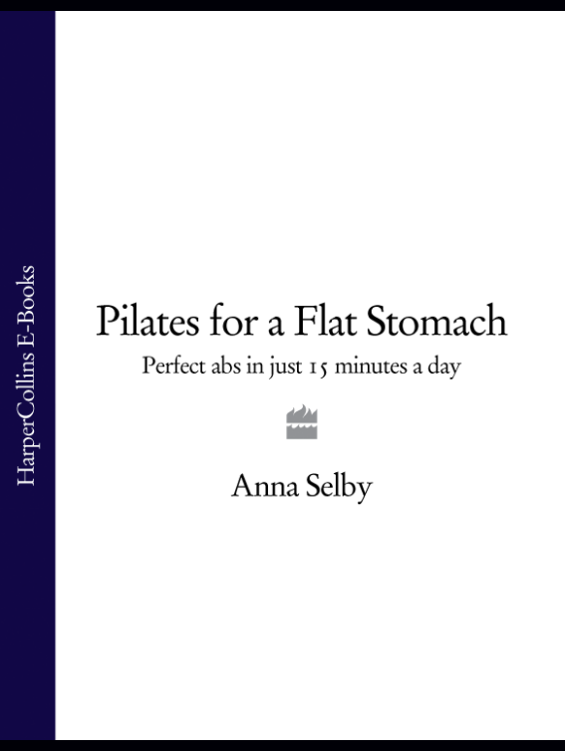Pilates for a Flat Stomach
Perfect Abs in Just Minutes a Day
Anna Selby
Table of Contents
Cover Page
Title Page
How to Use This Book
What is Pilates?
The Pilates Principles
How Pilates Helps You Get a Flat Stomach
Applying the Principles
Stage One Exercises
Stage Two Exercises
Stage Three Exercises
Day-to-Day Pilates
Make
www.thorsonselement.com your online sanctuary
Other Books By
Copyright
About the Publisher
How to Use This Book
There are many reasons why Pilates has become such a popular form of exercise. The main one, quite simply, is that it works. To get the most from the exercises in this book, however, you do need to do them properly. This means understanding the principles of the system and applying them so that you use your muscles in the most efficacious way.
I would always strongly recommend that you have at least a few lessons with an experienced Pilates teacher, rather than launch into uncharted waters on your own! We all develop little quirks of posture and movement that over time can turn into bad habits so sometimes you may think you are doing an exercise correctly when in fact you are using all the wrong muscles in an effort to simulate the photograph in the book. Because Pilates is such a precise science, you need to become very aware of how your body works and how to use it in the best possible way. A good teacher will help you do this. My first Pilates teacher was Dreas Reyneke and, after around three sessions at his London studio, I found I was walking down the street in a completely different way feeling lighter, looser, more poised and more relaxed. I hadnt even been aware that tension had been bunching up my muscles and joints in various parts of my anatomy!
As with any exercise regime, if you have any concerns whatsoever about your health, you should consult your doctor before you begin. With this particular book, this applies tenfold if you have any back problems. The strength of the back and the abdomen are closely interrelated and I would strongly recommend anyone with back problems to work thoroughly through the first level of exercises before going on to the second and to leave out the third level altogether. And, if ever you feel any strain or pain in the back, or if the muscles start to bulge or quiver during an exercise, always stop immediately. Your muscles are not yet strong enough for what you are trying to do; strengthen them with exercises you can do without straining and come back to the harder ones when youre ready.
The book is divided into three main sections, the exercises becoming progressively harder. You dont need to be on to the most strenuous exercises, though, to achieve your goal. Because you use your muscles in a very precise and controlled manner in Pilates, you will start to strengthen and flatten your stomach muscles from the very beginning. In fact, you can stay permanently at stage one and get a result, providing you do the exercises thoroughly and regularly. The later exercises will give you added strength but if they are too much of a strain for your abdominal muscles, that strain will be transferred to your back with the inevitable consequences of back pain or strain. So, the underlying principle with this book is to take it gently and work through each stage until you can perform each exercise fluently and accurately, and only then to go on to the next stage.
What is Pilates?
The Pilates method originated around one hundred years ago near Dsseldorf in Germany when a frail child called Joseph Pilates took up body-building to increase his strength. At the time he was thought to be prone to tuberculosis, as well as being generally weak and sickly but, so successful was the programme he devised, that by the age of 14, he was posing as a model for anatomical drawings.
He went on to become a keen sportsman gymnast, skier, boxer, diver and even a circus performer. In 1912, he left his native Germany and moved to England where, at the outbreak of the First World War, he was interned as a enemy alien. Pilates used his enforced leisure to develop his method of attaining peak physical fitness.
Pilates called his new system muscle contrology and, in it, he aimed to bring about the complete co-ordination of body, mind and spirit by working with not on or against the bodys muscles. After the war, he returned briefly to Germany and then moved to New York, where his method was an immediate success, particularly with dancers such as Martha Graham and George Balanchine, the founder of the New York City Ballet. It remained something of a secret amongst dancers until comparatively recently when sportsmen, actors and the public began to discover it. The popularity of Pilates has soared over the last few years.
THE ORIGINAL PILATES METHOD
Much of Pilates early work was based on the rehabilitation of ill or injured people. During his internment, when Pilates worked as a nurse, he had experimented devising an exercise regime using springs attached to hospital beds, so that patients could begin to work on toning their muscles even before they could get up. Springs used as resistance were the cornerstone of the method and Pilates designed a machine that he called the universal reformer, a sliding horizontal bed that could be used with up to four springs, according to the exercise and the strength of the individual. On this machine, one could perform plis and other exercises but without putting any weight on the joints (and so beneficial for those with injuries or other joint problems) and against resistance (so that the muscles would be worked harder).
Pilates developed several other machines for his New York studio and these have been adapted and used around the world ever since. More recently, the principles of the Pilates method have been adapted for use without machines and this system has become particularly popular. It is this version of Pilates that has been used in this book.
The Pilates Principles
The Pilates method has changed substantially over the decades but its underlying principles remain the same. One of these is that Pilates is, quite simply, the thinking persons exercise. Unlike the kind of workout that involves jumping around to loud music, where your main priority is to keep up, in Pilates every movement is carefully controlled for maximum effect. To work, it requires concentration. For each and every exercise there are questions you need to ask yourself. Is the navel drawn towards the spine? Is the heel in the correct position? Is the neck long and aligned with the spine? Are you doing the correct breathing?
In the Pilates method, the placing and movement of every part of your body counts and the body works as an integrated system. The more you use your body correctly during exercise, the more you will use it correctly in everything you do. Your posture improves and the headaches, tight, contracted muscles and tensions that arise from poor posture all fade away.
Interestingly, all this concentration does not leave you mentally drained or exhausted. On the contrary, it is a profoundly relaxing method of exercise, and its slow, rhythmic movements are a stress relief in themselves and leave most people feeling simultaneously calm and energized.

